Little background
I'm new to writing use cases and representing their scenarios. I'm dealing with a complex system. In the first step of analyzing the system, I created a use case diagram where each use case represents a distinct goal or value for the system. I have tried my best to keep the use cases independent. All these use cases require the initialization and activation of the system, so I decided to take out this common part and link it to the main use cases using include relationship. I understand that include and extend relationships need to be used only when necessary. Now I'm lookin into defining scenarios for each use case and then developing user stories and requirements based on scenarios.
Main issue
The use cases are very complex and the easiest way to analyze it seems to be mapping it into a sequence of steps/activities where each activity contains several scenarios and each scenario is represented using a sequence diagram. I understand that an activity cannot be a use case which is related to the main use case using include relationship; but having sequence diagrams for activities seem wrong too.
What is the best way to represent a use case where each step of the main flow is complex and can have several interactions between actors and systems as well as having error scenarios which can result in termination of the sequence at that step or possibility of the user cancelling/aborting the sequence? I have attached a simplified version of the activity diagram for "Initialize" use case. As I mentioned, each activity can have many scenarios. For example
- "Perform Self check" has many steps and each step might result in a failure that can terminate the sequence and alert the user (via a HMI). The user then can either terminate the initialization or retry.
- "Validate system configuration" include steps for obtaining the reference config versions and comparing that to the system config, then download the new config files if necessary and then update the system configs. Each step might have a failure resulting in some sort of message to user and termination of the sequence. In some cases user should be able to skip the failed steps and proceed without doing that activity. Same goes for every other activity in the diagram; many steps with exception or alternative paths.
Can I map these on one sequence diagram for the "Initialize" Use case?
My attempt to put all these on one sequence diagram failed.
I tried putting all these interactions on an activity diagram with swimlanes but things got so complex that stakeholders have a hard time understanding what is going on.
Maybe I'm trying to put too much details at the system level. Should I leave all these interim steps and interaction for the lower level of design? Should I create a hierarchy of use cases and roll down the complexity? I'm confused. :(
What is the best way to deal with such level of complexity? Could you provide some good examples.


